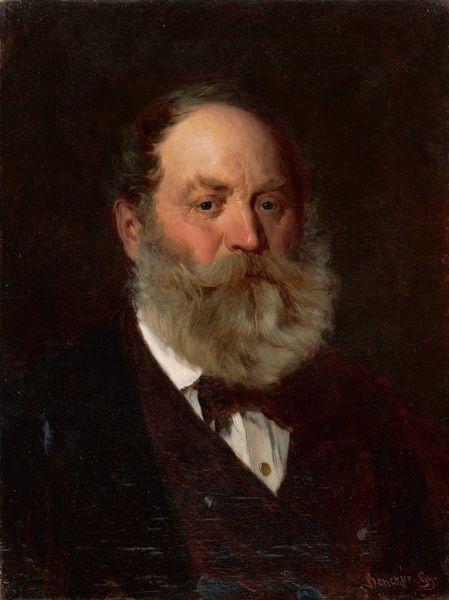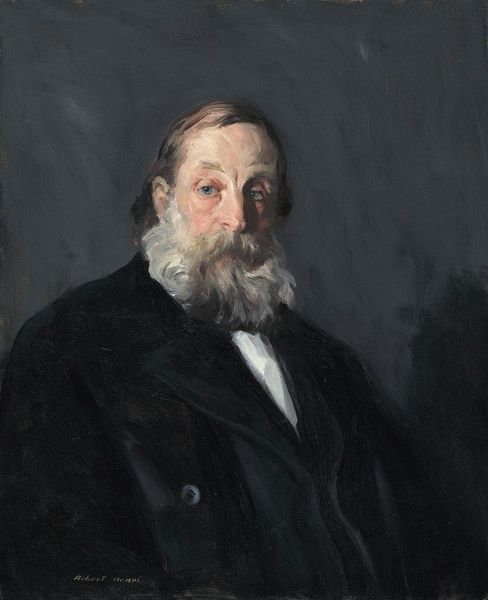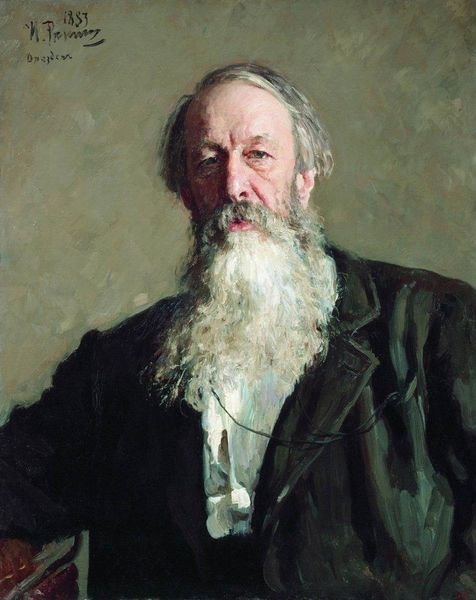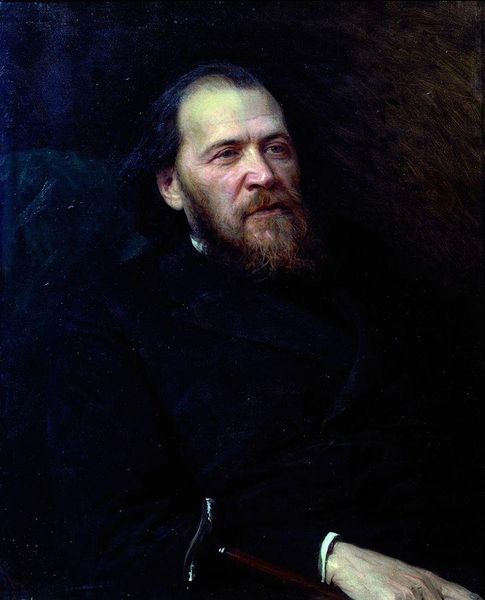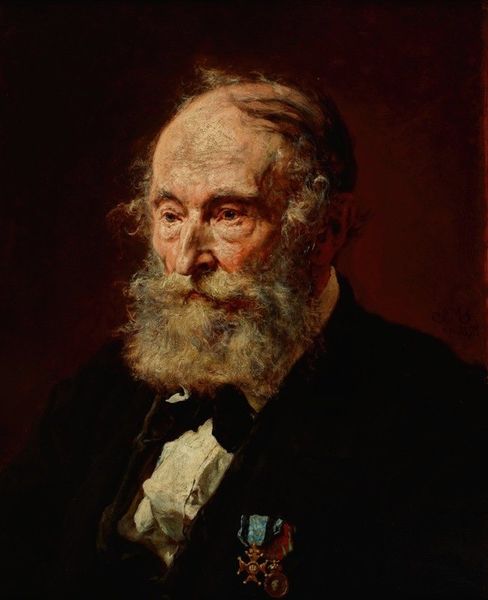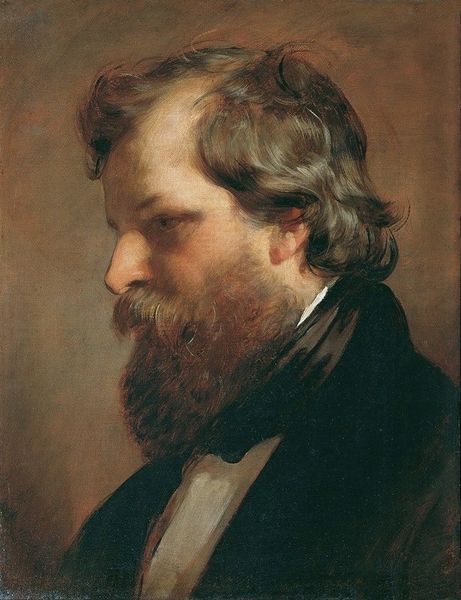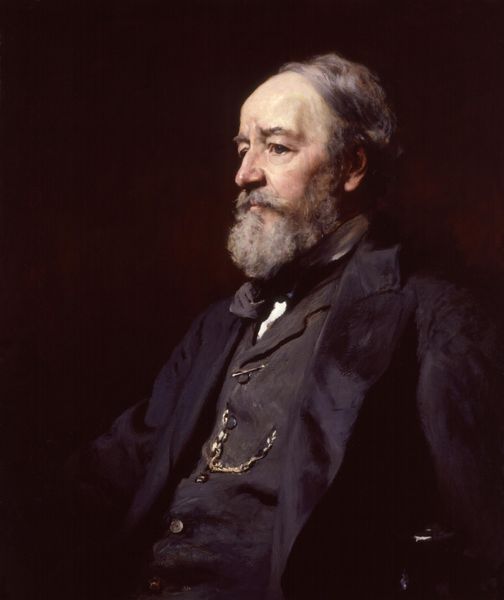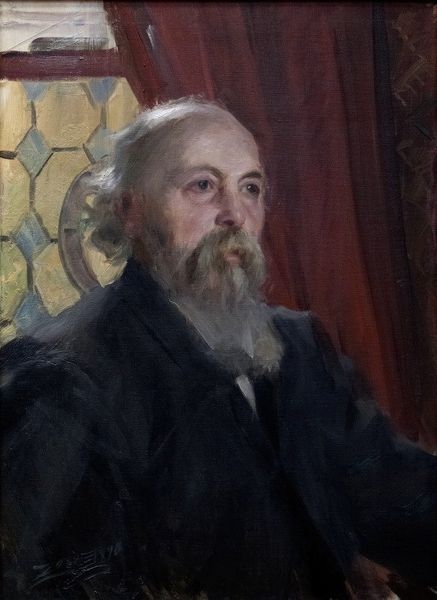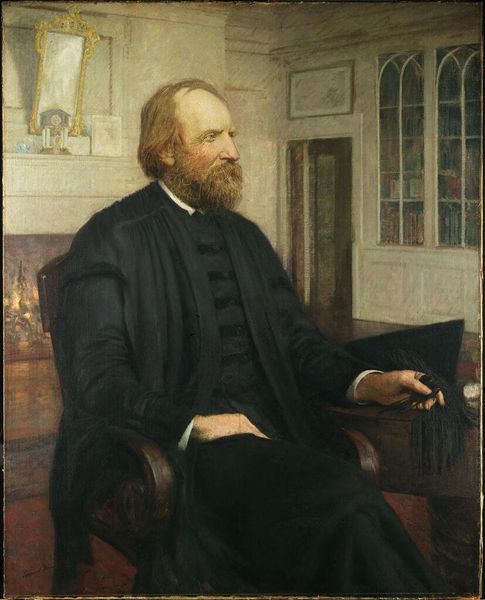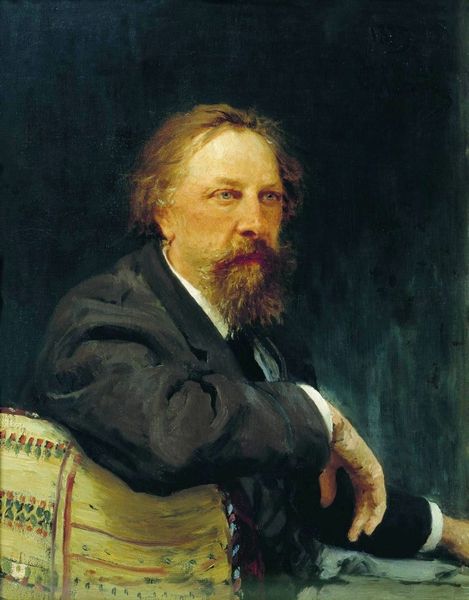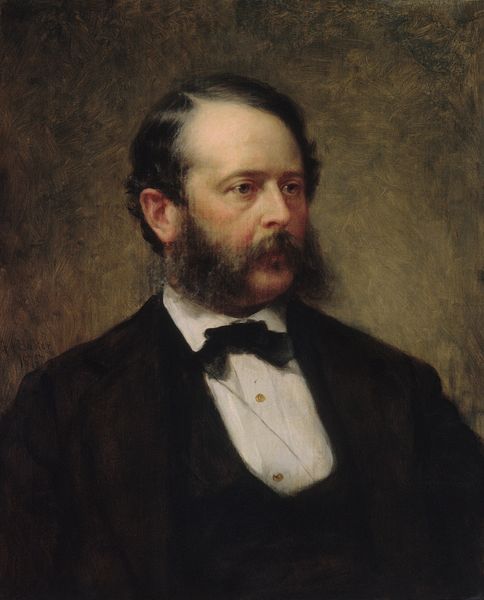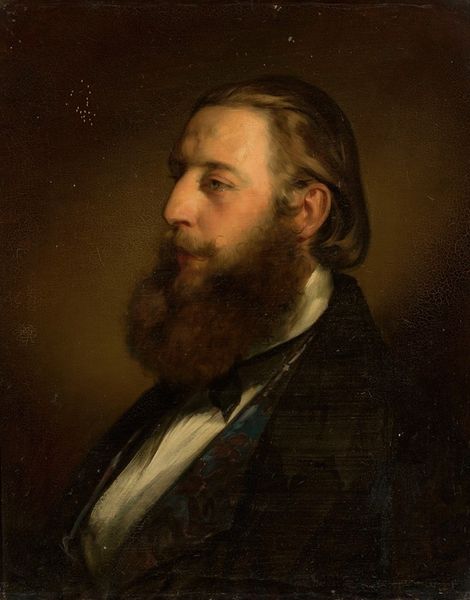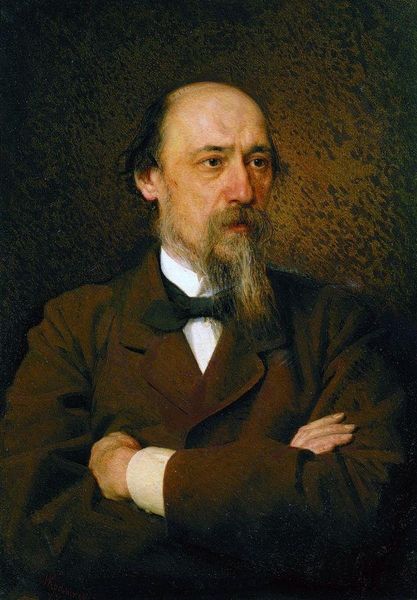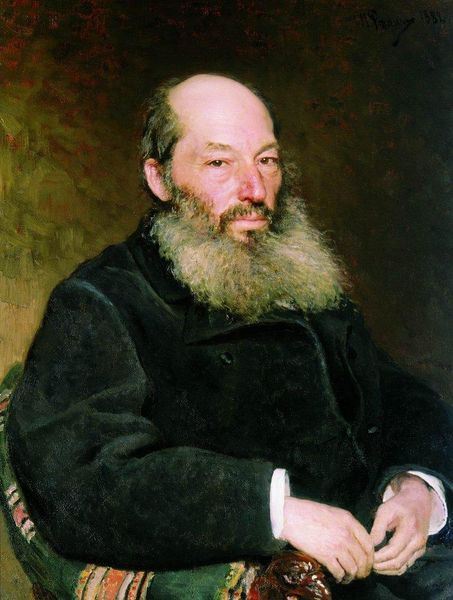
Dimensions: 78 x 63 cm
Copyright: Public domain
Curator: Ilya Repin's 1873 oil portrait, titled "Portrait of the Art Critic Vladimir Stasov," presents a compelling image of the influential critic. My initial impression is one of reserved intensity. The dark background throws his pale face and striking beard into sharp relief. Editor: Yes, the dramatic chiaroscuro creates a sense of intellectual gravitas. The darkness feels deliberate, suggesting Stasov's critical eye, perhaps his challenging perspectives against the social and artistic norms of the time. This was a period of intense debate about the direction of Russian art, and Stasov was at the forefront. Curator: It's interesting how Repin renders the fabrics. The softness of his beard contrasts with the texture of his black suit jacket, it’s almost like Repin is deliberately examining the material world, using the textures to speak about Stasov's personality and the society to which he belonged. The brushwork appears incredibly deliberate, creating an incredible sense of depth with the paint. Editor: I think it speaks to the role of intellectuals and cultural gatekeepers in shaping national identity. How much power did Stasov hold? Repin clearly acknowledges his importance. This portrait solidifies his image as a pillar of the Russian avant-garde, doesn’t it? One must ask: what kind of biases might be embedded in such a portrayal of intellectual authority? Curator: Undoubtedly a pertinent point. And perhaps Repin highlights the intellectual labour of Stasov himself. Here, the meticulous depiction of garments and the thoughtful rendering of textures might not simply signal status, but hint to Stasov’s profession, or even social class. How was he positioning himself through fashion and the patronage of such artworks? Editor: He’s positioned as a figure deserving of monumental respect, even reverence. The formal attire and stern countenance could signify an adherence to specific social structures, while his actual views may challenge this very fabric. I wonder about the internal conflict suggested through Repin's realistic, even somewhat austere, portrayal. It certainly hints at layers beneath the surface. Curator: Exactly, it opens avenues for nuanced interpretation. It encourages viewers to reflect on the role of representation in constructing social narratives and power dynamics, beyond purely the aesthetic merit. Editor: Absolutely. And thinking about representation helps us reframe canonical artworks to encourage contemporary criticality. Curator: Well, looking again at the layers of brushstrokes... you’ve provided much food for thought. Thank you.
Comments
No comments
Be the first to comment and join the conversation on the ultimate creative platform.
